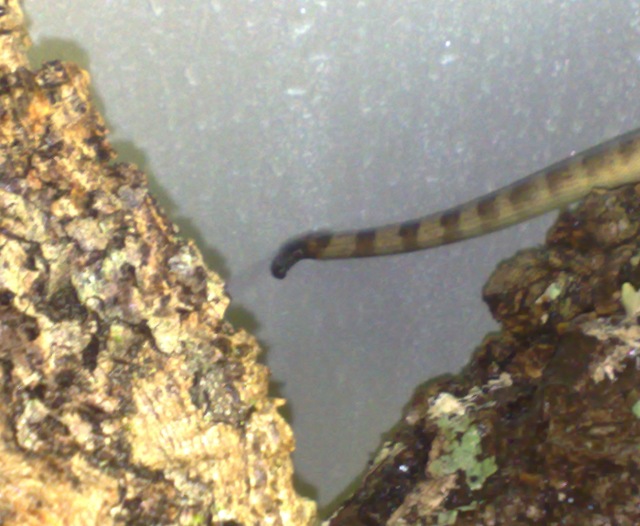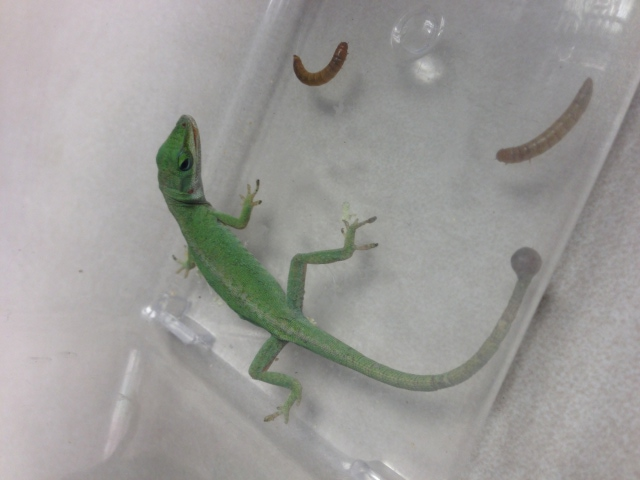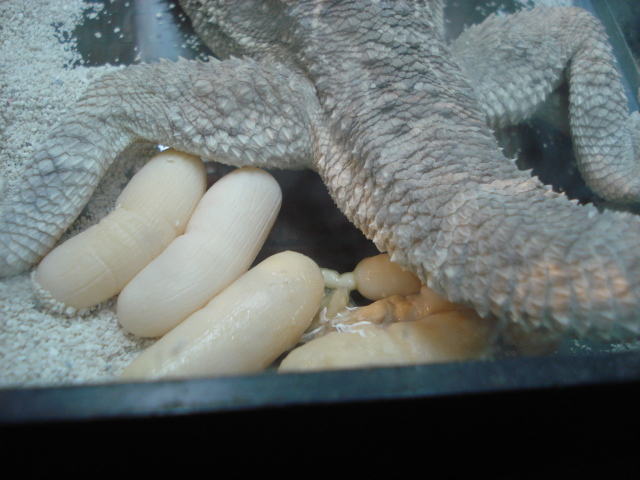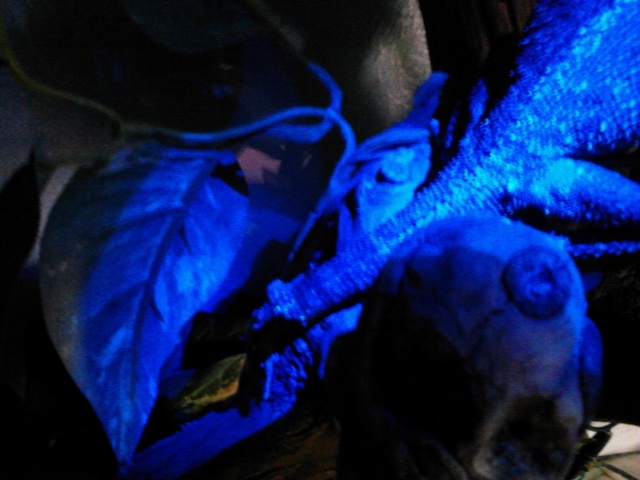QuestionI read your answers to the questions on moccasins. I no longer kill snakes--period. But I used to. I live in southern Illinois--100 miles from the tip of the state. A few years ago, my place was inundated(well, at least 6 of them) with huge moccasion look a likes.(at least that is what I was told) I do have a ditch that has water usually always standing. Apart from that--no water.
We were finding them everywhere --this snake was aggressive as you mentioned in one of your answers. It would attack the lawn mower wheels--it would never slither off in fear.That is why I was able to kill them--they just sat there and hissed at me. Anyway, I actually killed two of the four or five feet long ones. I used a shovel and they were almost impossible to kill because of their thick hides. Also, it was very hard to see their yellowish ( I think) markings because they were so feint.
Now to the point (sorry so slow) I contacted the snake expert at Southern Illinois University. He was quite unhappy with me. SIU is 85 miles south of me. He said they NEVER EVER go farther north than Carbondale. I said not even a few miles---nope. I find this hard to believe. I had many men look at the dead snake and were sure it was moccasin. White mouth, the thing on their face. thick skin with markings so feint you could barely make them out. But he told me I was killing a very beneficial water snake that looked exactly like the moccasion. He made me feel very guilty.
That was 13 years ago, and like I said, I no longer kill any snakes simply because it is pretty frightening and I don't want to kill the "good" ones. But just want to know if this guy wasn't a little off on his theory that they simply don't move even a mile or two north of route 13.
By the way, they couldn't kill you, could they? I would probably die from the fright, but other than that, they just make you a little sick, don't they.
Thanks for any info. I just thought the guy was nut for saying they wouldn't go even a mile or two north of Carbondale, but who knows.
Thanks so much.
AnswerWater "moccasin"
I thank you for not killing any more snakes. Even snakes have a rightful place in nature and deserve to live. Even venomous ones. I have been handling venomous native snakes for about 2 decades, and I have yet to have one give me a reason to kill it. I have yet to be bitten, and yet I confront, move and hold them frequently. At the moment I am caring for two baby Western Diamondbacks in my house, which came out over the winter on an unusually warm day and were basking on the road. They would not have survived the next cold snap, so I am caring for them until they are a bit bigger.
You very well may have been killing harmless non-venomous snakes. The first indication is the hissing and defensiveness. The most defensive snakes (and hissing ones) are often the non-venomous variety. A water moccasin may coil and open it's mouth wide at you, but that is about it. They are not nearly as aggressive as laypersons and myths would have you believe, and often not as apt to bite as the non-venomous ones. They can be quite docile and I have known many people who have kept them as marginally domesticated captives. In fact, in one case in east Texas a few years ago some school children brought a water moccasin in to school for a project, and the clueless science teacher misidentified it as a Ratsnake. They kept the snake in the classroom for two weeks before children mistakenly placed the snake in a tank with another snake, and the snakes began fighting. When the children tried to separate the fighting snakes, they were bitten, but they had never been bitten while handling this water moccasin before then. That speaks to their actual docile nature. In the wild though, they may bite you if you step on them or they otherwise think you are trying to kill them.
You mistake the standing ground as the snake being without fear though. The snakes do fear, but what would you do to save your life? The snake will turn and flee if there is cover close enough and it feels it has a chance to make it. Often though, they know that to turn and flee they would be easier to kill, so know it is best to stay holding their ground and protect their body.
The academic egg heads are often mistaken. Particularly the ones who don't get out to the field much like I do. A lot of times they are too busy publishing papers or giving lecture. I run into these kind of egg heads all the time. I documented the western most range of the Three Toed box turtle, at least 80 miles west of where the professors at University of Texas and the state said they would be. I also missed by a couple years being the first to document the Massasauga rattlesnake in this area.
The professor could be right, he could be wrong...but the first thing about science is knowing not to make definite statements ruling things like this out completely. What I do know is that water moccasins are pretty much restricted to southern Ill, in the Ohio River Valley. To go to very far north of this probably means great reduction in chances to survive winters. They could possibly swim up tributaries, etc, and you can't rule anything out if there had been flooding. I am not sure where you are in relation, but if you live in S. Ill. anything is possible. Red Eared Sliders were recently discovered living and surviving the winters in Holland, where they are not native, but have been released pets. They are a southern US turtle. It is too cold for them to breed and lay eggs in Holland, but they do survive.
So, I cannot rule out that water moccasins could be in your area, but, I am quite convinced based on your other information that you have probably been killing something other than water moccasins. The defensiveness and the hissing tells me this, as well as the size you are giving. Water moccasins in northern latitudes rarely if ever get as large as you indicate. A 4 ft. one would be quite large. Moccasins are short and squat snakes for the most part, and more common in your area would be about 2.5-3ft or just over. The largest of them are found in the south eastern coastal states, so I doubt you have ever encountered a 4 or 5ft. moccasin in Ill.
People often mistake common water snakes for a water moccasin, presuming that any snake in the water - is a MOCCASIN. There are many harmless species of water snake out there, and 99% of what you see is going to be harmless. I know. Even in Texas where I hunt for them nightly, most snakes I find are cornsnakes, ratsnakes, bullsnakes, or kingsnakes, and this is in heavy rattlesnake country. In my area, country people often swear they killed a moccasin, only to have me look at it and tell them it was a completely harmless Diamondback Watersnake. A "man" in general is often not a good judge of knowing what a moccasin is. Most men don't have a clue, but will act like they do. What matters is if the man is a herpetologist or skilled herptile naturalist, etc. The only way to know for certain otherwise, is to see two elongated hinged fangs. Not long curved front teeth, but rear folding fangs.
But best just clear a path next time and let them do their thing. You could continue to mow in the vicinity, and they will either just look at you, or move on when you actually back away a bit.
The water moccasin is part of the trifecta of pit vipers in the US. There are the rattlers, water moccasins, and copperheads. Venom potency in descending order. Most people are not even given antivenin dose for a bite from a Copperhead, because the antivenin is developed from Rattlesnake venom, and may cause a more severe reaction than the Copperhead bite itself. You are very very unlikely to die from a bite from a moccasin, but it will be extremely painful and cause localized tissue damage and swelling. There will likely be scarring. I know a guy from my high school days who was bitten by one, and he did not go to the doctor for fear of his dad being angry that he was still handling snakes. He skipped from school a few weeks, was badly ill and his arm swelled to the size of his thigh...but he survived with no lasting complications other than cosmetic. I would not advise anyone else do that, because it risks gangrene and loss of the limb and death as a result of that secondary factor. In elderly people, children or in the case this was a very large snake, death "could" occur without treatment, so I have to add that caveat. The larger the snake, the more venom they are capable of delivering. If a 4-5ft. moccasin delivers a substantial portion of it's venom, then compromised/high risk people are obviously in greater danger, but snake bite deaths are HIGHLY rare these days in the US, and again, you would almost certainly never encounter a moccasin that large in Ill. Most US snake bite deaths are attributed to western species of rattlesnake, such as Diamondbacks and Mojave rattlers, and which are found in areas where people may be hiking the desert and a long way from medical help.
Please pass this information along to encourage the respectful treatment and conservation of our maligned, mis-indentified, and misunderstood snakes. I am not familiar offhand with Ill conservation law, but in some northern states, many snake species are protected and illegal to kill.
Thank you,
Mick
Wichita Falls Reptile Rescue (reptile wildlife specialist)
PS, check out this website for some decent distinctions of water moccasin and other water snakes.
http://www.coastalplainsreptiles.com/articles/Everyone/ReallyMoccasin.html

 Bearded Dragon - Eye issue
QuestionStella 1
QUESTION: Hey,
I have a bearded
Bearded Dragon - Eye issue
QuestionStella 1
QUESTION: Hey,
I have a bearded
 Basilisk tail
Question
basilisk tail
My green basilisk dropped his ta
Basilisk tail
Question
basilisk tail
My green basilisk dropped his ta
 Green Anole, femail, cyst/blister
Question
Axebella
Hello Donna. My son and
Green Anole, femail, cyst/blister
Question
Axebella
Hello Donna. My son and
 Determining whether eggs are fertile
QuestionLizzie eggs
QUESTION: We have a female b
Determining whether eggs are fertile
QuestionLizzie eggs
QUESTION: We have a female b
 Broken Tail
Question
Broken Tail!
I have a female Mountain H
Broken Tail
Question
Broken Tail!
I have a female Mountain H